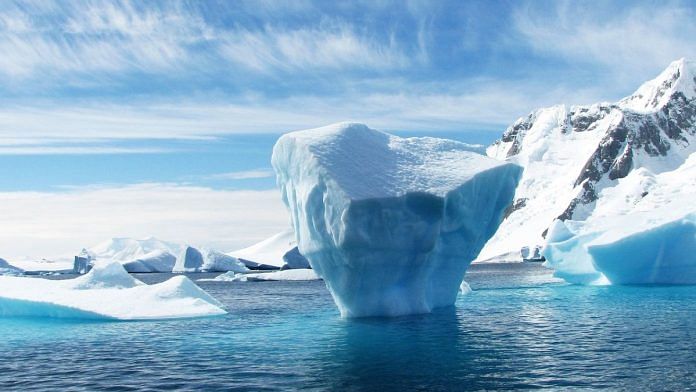New Delhi: The melting of Antarctic sea ice is contributing to rising sea levels, with global warming identified as a key factor. A fresh discovery by scientists, however, has added to this understanding.
An analysis published in the Nature journal on 21 February examined the Antarctic ice pinning points from 1973 to 2022. These pinning points are underwater terrain of Antarctica that stabilise floating ice shelves, preventing them from melting.
However, researchers have found a significant reduction in these pinning points, with more than 37 percent diminishing in size between 2000 and 2022. This reduction means there’s less area for the ice shelves to attach to and remain stable.
The study highlights that only 15 percent of pinning points were reduced from 1973 to 1989, before increasing to 25 percent from 1989 to 2000.
Scientists from Edinburgh University caution that if this trend persists, it could result in further sea ice melting and an increase in sea levels. Read more.
Also Read: The things they do for sex? These Aussie marsupials give up sleep in mating season & end up dead
Neanderthals used glue-like adhesive for their weapons
A pioneering study reveals that Neanderthals may have utilised a glue-like substance for tool attachment.
The findings, detailed in the Science Advances Journal on 21 February, highlight the presence of an ochre-based adhesive on tools excavated from a Middle Paleolithic site in France.
Previously, the use of ochre as an adhesive was documented among African Homo Sapiens communities but not among Neanderthals, who existed 120,000 to 40,000 years ago.
This discovery provides new insights into the cognitive capabilities and technological advancements of the early human species, adding to our understanding of their tool-making skills. Read more.
Unusually long gamma-ray burst occurred last year
In 2023, an extraordinary gamma-ray burst (GRB) event was observed, which led to the production of rare earth elements.
Detailed in a Nature journal study published on 21 February, researchers analysed data from NASA’s Hubble and James Webb telescopes to investigate a GRB that occurred in March 2023.
Gamma-ray bursts are produced when two neutron stars collide with each other. This particular GRB stood out due to its exceptional brightness and duration, persisting for 200 seconds.
The study focused on the kilonova — a cosmic explosion scattering material post-collision — that the gamma-ray burst had left in its wake.
The study found that the kilonova contained the presence of lanthanides, a group of rare earth materials generally linked to shorter GRBs. Further analysis will reveal why this happened with this particular gamma-ray burst. Read more
Also Read: Ancient mangrove forest discovered on Panama island, preserved by a volcano for 22 million years
New Anaconda species found
Scientists have unveiled a new species of Anaconda in the Amazon, leading to a reclassification within this group of formidable giant snakes.
Published in the Diversity MDPI Journal on 16 February, the research involved collaboration with the Waorani community in Amazon and revealed a 5.5 percent genetic divergence between the Northern Green Anaconda and its southern counterpart.
This difference pushed them to categorise the Green anaconda or Eunectes murinus into two subspecies.
The study, which included contributions from various universities, such as New Mexico Highlands University in Las Vegas, enhances our knowledge of Anaconda genetics and biodiversity. Read more.
(Edited by Richa Mishra)
Also Read: One giant leap for computing? Scientists develop 1st functional semiconductor made from graphene



